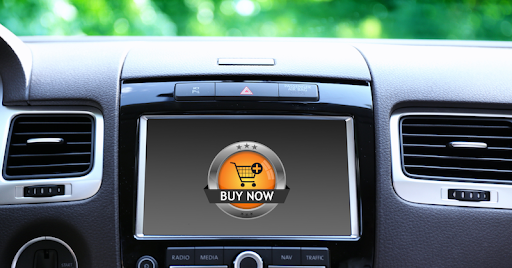
We recently discussed , which are a little intrusive. Now imagine those ads in your car. Ford submitted a for targeted in-car advertising.
That doesn’t mean Ford will do this — in fact, it that submitting applications is just a regular part of doing business. As Kelley Blue Book noted, Ford a patent for a conveyor belt that moves items from the trunk to the front seat, and that hasn’t happened. .

.. what in-car ads might look like.
Ford’s proposed system delivers audio and visual ads via the car’s speakers and screens, based on information it learns about the driver and its passengers. For example: If the driver puts in a GPS destination for a grocery store, the system might display ads for stops along that route or for specials at that store. It targets ads based on things like in-car conversations or historical data, such as if a driver typically goes shopping on Wednesday afternoons.
If passengers, who are served visual ads, respond better to audio ads, it might switch up its delivery methods. Drivers wouldn’t be served visual ads for safety reasons. .
.. from ads? Probably not, unless you’re still rocking an old Chevy with a tape deck, use a dumb phone, and have a TV with an antenna.
Cars have been capable of for several years now — how fast we drive, where we go, etc. Both Nissan and Kia collecting data on people’s sex lives, whatever that means. They can use that data to direct drivers to its dealerships for maintenance or sell it to third parties.
Much like TVs and , Americans are replacing their cars less often, and selling data to advertisers is another way for manufacturers to squeeze more revenue out of those less frequent purchases..










